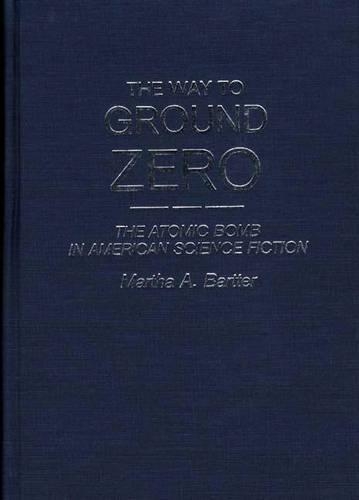
The Way to Ground Zero: The Atomic Bomb in American Science Fiction
(Hardback)
Publishing Details
The Way to Ground Zero: The Atomic Bomb in American Science Fiction
By (Author) Martha A. Bartter
Bloomsbury Publishing PLC
Praeger Publishers Inc
24th October 1988
United States
Classifications
Tertiary Education
Non Fiction
813.087609
Physical Properties
Hardback
290
Description
Bartter surveys 250 American science-fiction stories, and American SF novels--with occasional overlaps of stories made into episodic novels--that have some relationship, often direct, sometimes marginal, to atomic weapons and their effects. . . . Highly recommended for popular literature collections. Choice Divided into three principal parts, The Way to Ground Zero begins by exploring The Way to Hiroshima. Through a detailed analysis of the works included, Bartter reveals the sociopolitical assumptions that authors took for granted and develops a method by which these assumptions can be disclosed. She shows that encoded in these fictions we can find the patterns that led us to create and use the atomic bomb. In the second section, Bartter looks at the deeper assumptions on which these sociopolitical assumptions rest, focusing particularly on those which perpetuate considerations of nuclear war--both in science fiction and in actual policy making. Finally, Bartter explores alternative assumptions proposed by innovative science fiction writers. Throughout, an attempt is made to forge a deeper understanding of the ways in which science fiction both reflects and influences human and international relations. Students of science fiction and of literature and politics will find Bartter's work enlightening, provocative reading. Bartter argues that a close examination of American fiction, particularly science fiction, can offer important new insights into the events surrounding the bombing of Hiroshima in 1945. The use of an atomic bomb to end the war followed a scenario long established in science fiction--defeating our enemy with a super-weapon developed by native technological genius. By examining the interrelationship between this persistent plot-device and the development and use of a real super-weapon, Bartter sheds new light on the transactional role of literature and real life. Her analysis is based on a comprehensive theory of human nature, substantiated by exhaustive research in science fiction archives and libraries and covers a large number of stories--both well-known and relatively obscure--featuring super weapons or super war and published by American authors.
Reviews
Bartter surveys 250 American science-fiction stories and 131 American SF novels--with occasional overlaps of stories made into episodic novels--that have some relationship, often direct, sometimes marginal, to atomic weapons and their effects. The book falls into three sections. The first is a historical survey, beginning before WW I, but with about half of its space on the post-WW II, situation and stories. Although there are comments on the social and psychological implications of the fiction in the first section--not the conscious meanings, but the assumptions behind the fiction--the fullest analysis is in the second part. Particularly good is a contrast of the implications of the atomic-related fiction of Robert A. Heinlein and Theodore Sturgeon. The brief third section suggests the limitations of the popular imagination, especially the assumption that only war is interesting and worth writing about; that peace is only the lack of war. Highly recommended for popular literature collections; of some use for any advanced collection (university or public library) dealing with the atomic bomb, for commercial views--and hence popular views--of atomic energy.-Choice
"Bartter surveys 250 American science-fiction stories and 131 American SF novels--with occasional overlaps of stories made into episodic novels--that have some relationship, often direct, sometimes marginal, to atomic weapons and their effects. The book falls into three sections. The first is a historical survey, beginning before WW I, but with about half of its space on the post-WW II, situation and stories. Although there are comments on the social and psychological implications of the fiction in the first section--not the conscious meanings, but the assumptions behind the fiction--the fullest analysis is in the second part. Particularly good is a contrast of the implications of the atomic-related fiction of Robert A. Heinlein and Theodore Sturgeon. The brief third section suggests the limitations of the popular imagination, especially the assumption that only war is interesting and worth writing about; that peace is only the lack of war. Highly recommended for popular literature collections; of some use for any advanced collection (university or public library) dealing with the atomic bomb, for commercial views--and hence popular views--of atomic energy."-Choice
Author Bio
MARTHA A. BARTTER is a member of the English Department of the Ohio State University at Marion. A former book reviewer for the Gannett Rochester newspapers, she has written several articles on science ficion and is currently working on a novel.
